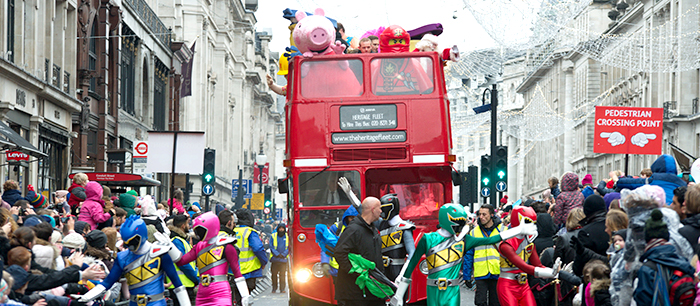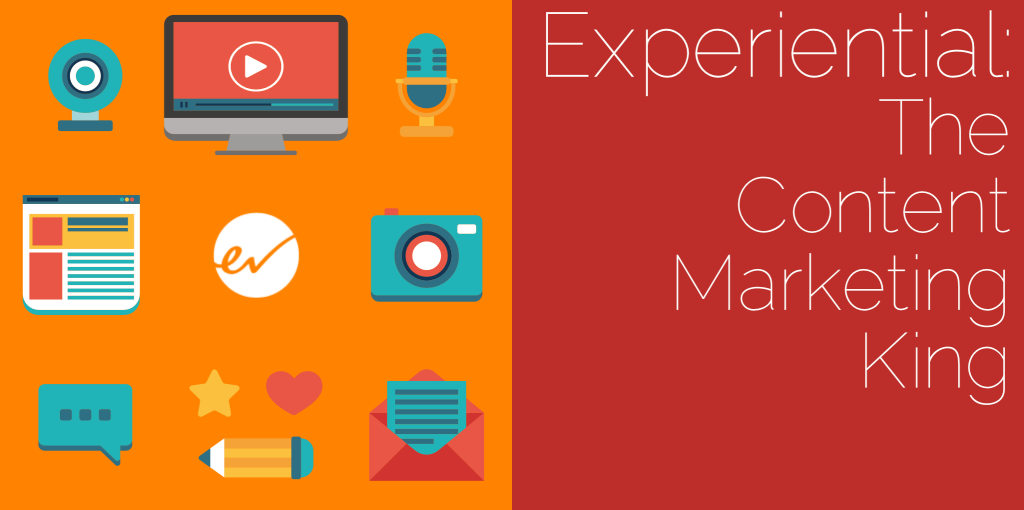How To Create Evergreen Content, Using Experiential Marketing
According to Curata, 75% of marketers are increasing their investment in content marketing, whilst 74.2% of companies indicate that content marketing is increasing the quality and quantity of leads.
Content Is Everywhere
According to Curata, 75% of marketers are increasing their investment in content marketing, whilst 74.2% of companies indicate that content marketing is increasing the quality and quantity of leads.
Reading statistics like these, it’s easy to see how content marketing has become a highly respected practice, playing a key role in marketing strategies worldwide.
When examining the relationship between experiential and content marketing, EMI’s 2016 Eventtrack report discovered:
“seventy-two percent of consumers say they positively view brands that provide quality event content opportunities and experiences.”
This article will outline the wealth of content creation opportunities presented by experiential marketing campaigns and how they can be implemented in your campaigns.
Before we get underway, it is important to acknowledge that the same Eventtrack report found, only 35% of brands say they always capture or create content related to their experiential marketing programs, whilst 51% of brands planned to spend more on their event content generation in 2016.
The Takeaway?
Content creation through experiential marketing is currently an underused resource, but it won’t be forever.
The King Of Content Marketing
We’ve all witnessed experiential marketing’s ability to create viral content, big name examples include Red Bull Stratos, West-JET’s Christmas miracle and Coke-Zero’s Unlock The 007 in You. However, not every brand has the ability to send a man into the stratosphere (which is a real shame). The following techniques and principles can be scaled to accommodate any budget, from multi-national ecommerce giants to bricks and mortar boutiques.
Experiential Content
Co-Creation
A study by Nielsen found 84% of respondents trust recommendations from people they know higher than all other forms of advertising.
Combine this with the fact that 100% of consumers who create content at events share that content through online channels (Eventtrack 2016) and it is obvious that all brands should endeavour to provide as many opportunities for visitors to create content at their events as possible.
Methods:
- Branded Snapchat Filters: – With 158 million users sending 2.5 billion snaps, daily (SEC), Snapchat is the ideal platform for brand exposure. With Snapchat charging as little as $5 per 20,000ft for branded geofilters, the medium is accessible to all and notable recent examples include filters created for the AMAs and the Oscars. Snapchat’s filters have been so successful, that Facebook is supposedly planning the same thing. For more information on Snapchat geofilters check out this article from buffer social.
- Competition: – “Tweet your experience with the hashtag #…” Consumers are far more likely to share content from your event if you give them a reason. Incentivise sharing by offering rewards for the best responses, the value of the promotion far outweighs the cost of the prize.
- Force Their Hand: – We know event visitors look for photo opportunities, 98% of consumers create digital or social content at events and experiences according to EMI. By putting on a spectacle, you trigger this desire; attendees go home with something to show their friends (their value), and your brand gets valuable earned promotion (your value). A perfect example of this is Hamleys’ annual toy parade.

This list isn’t exhaustive, there are numerous other methods of co-creation; photo booths, influencers, etc. What’s important is identifying which methods suit your campaign.
Finally, remember to stay active and responsive online, 90% of all marketers indicated that their social media efforts have generated more exposure for their businesses (Social Media Examiner).
Exclusive Event Content
On the whole, people enjoy exclusivity and experiencing new things. Producing your own content at an event is a great way to capture both these points of interest. Snapchats, live-streams (which we will discuss later), videos and images can all be used to give consumers an unprecedented view of your events at little or no extra cost.
Methods:
- At The Event: – Brands can use exclusive event content to expand the reach of the campaign, from those present on the day to the organic reach of their social channels and beyond if it resonates with followers. Videos and images from events also make excellent subjects for paid and owned promotion long after the event has passed.
- Behind The Scenes: – By giving consumers an inside look at the process of running an experiential marketing campaign, from planning to execution, brands give viewers new, exclusive content which displays transparency. Staff interviews, brainstorm photos, time-lapse stand construction videos and post-event analysis can all be used to show your work from a fresh angle.
- Social Take-Over: – Giving control of the brand’s social channels to event staff not only provides an interesting tilt on the content produced, but also helps give the brand a human face. ASDA is a prime example of this, giving control of local store accounts to their “community champions” gives communications a personal touch. Just be sure to choose the right person!
Live-Engagement Activity
The practice of live-streaming has been long-standing amongst news networks in the video gaming industry, where the biggest stories have always come from conventions. It has helped to have a tech-savvy audience which meant that this content could always be found.
81% of internet audiences viewed more live content In 2016 than they did in 2015 (Livestream). With advances in the accessibility of live-streaming, for both streamers and viewers, with apps like Periscope and Facebook live, marketers need to recognise the opportunity that event live-streams present for content delivery.
Methods:
- Expanding Reach: – Similar to what we have already discussed, live distribution can be used to disperse the event’s content on a bigger platform. The added bonus of being live gives an air of authenticity which doesn’t come across through scripted content.
- Q&A: – Live engagement activities can be used to hold a Q&A which runs parallel to the event, or it can allow passionate fans who couldn’t make it to the event to get involved. By creating engagement opportunities you develop a deeper, reciprocal relationship with your consumers.
- Exclusive Content: – Again this can run parallel to the event, giving viewers insight that even attendees are getting. Brand experts, thought leaders, influencers, and customers are all good choices for interviews. What’s most important is curating the content to ensure that it engages viewers, nobody wants to hear why you chose a rectangular sign over a square!
Hire A Professional
Whilst it can be costly, hiring a professional to document your event can leave you with beautiful, high-quality, evergreen content that can be consistently re-used in promoted post, adverts, case studies and show reels. According to Unbounce, video on a landing page can increase conversions by 80% or more.
Competition in media creation is high, with brands producing an increasing level of quality. 46% of marketers say photography is critical to their current marketing and storytelling strategies (CMO council), whilst 69% of companies reporting their video marketing budget is increasing (ascend2).
Due to this, it is becoming difficult to compete on the same level using inferior equipment. Furthermore, Brightcove found 62% of consumers are more likely to have a negative perception of a brand that published a poor quality video, hiring a professional gives your brand a much-needed edge on the subpar competition.
Here’s an example of professionally-shot content from our campaign with Rachel’s Organic:
Where Does This Leave Me?
By now, you should have an understanding of how experiential marketing can be leveraged to create high-fidelity, evergreen content that can be used to engage customers long after the event is over.
If you have any questions about this article or experiential marketing as a whole, please comment below or contact us, we’re here to help you.
